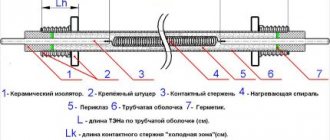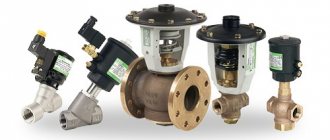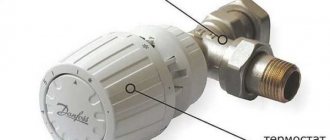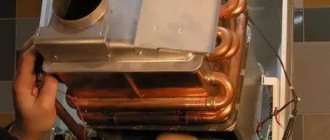To create a normal temperature regime in everyday life and at work, various types of heating devices are used. Depending on the installation location, they can be either temporary or permanent, and according to the principle of operation they are divided into convection and infrared. Convection models are classic and have been used by mankind since time immemorial, but today their use is not always advisable. Therefore, an infrared gas heater, which has significant advantages, is increasingly used to heat rooms.
Purpose
The main purpose of an infrared heater is to expose any absorbing surface to the rays it produces. Such surfaces include any objects around you that absorb light energy, that is, not transparent and the person himself. Due to this property, heating of the surrounding air space is a side effect of the operation of an infrared heater, when thermal energy from heated objects is transferred to the air. This determines the main advantage over classical systems - direct impact on a specific area and the absence of such large losses.
Rice. 1: fundamental difference in heating
In practice, an infrared gas heater is designed to heat any space in places where it is not possible to connect electric convectors to the network or where power supply is impractical.
As specific examples, an IR heater can be used for:
- Heating of gazebos and tables in nature, in park areas and recreation areas, etc.;
- Heating tents in the cold season from a gas cylinder;
- Heating garages to ensure comfortable working conditions;
- Heating of residential premises in summer cottages;
- Ensuring temperature conditions in the working area of industrial premises;
- Heating of greenhouses, chicken coops and nurseries for livestock;
- Heating any area in the open air (at construction sites, quarries, geological exploration sites, terraces, etc.).
Also, using this type of gas heaters, various surfaces can be dried and heated. An important advantage of an infrared gas heater is the use of a special element for burning fuel and producing infrared radiation. This feature makes its operation identical to that of electrical appliances, with the difference that it can function regardless of the presence of a centralized fuel source.
How to choose gas heaters for a summer house
The best option for heating residential premises with non-permanent residence may be portable devices of a catalytic operating principle. This is the safest option for gas equipment.
Factors determining the choice of device include:
- heater power;
- price;
- installation methods.
Most dacha communities are not connected to gas mains. Heaters powered by balloon equipment are suitable for them. It makes sense to install stationary gas appliances in dachas with year-round residence. They connect to pipes and radiators.
Design and operating principle
Structurally, an infrared gas heater includes a metal casing in which gas distribution equipment, automatic protective devices and a heat emitter are assembled. The principle of its operation is similar to a gas burner, but unlike conventional burners, there is no classical gas combustion here.
Rice. 2: operating principle of IR gas heater
Look at the picture, it shows the principle of operation of an infrared gas heater. When gas is supplied, it enters the diffuser, where it is picked up by a stream of air and directed into the mixing chamber, where a combustible mixture is formed. After this, the gas mixture enters the perforated porous structure of the ceramic plate. After a spark is supplied from the piezoelectric element, the mixture in the holes ignites and transfers thermal energy to the ceramic element.
Next, the heated ceramic plate heats up to a temperature of 900ºC and begins to emit waves in the infrared range. The ceramic emitter itself does not transfer heat to the surrounding space, like a convector, but directs the flow of infrared radiation into the heating zone. Such a zone is strictly limited in its geometric parameters, and the gas heater has a directional effect. All objects and people falling within the range of infrared radiation will be heated by the flow.
Timberk TGH 4200 SM1
Country of origin: China. The ceramic gas stove model is designed for heating rooms that do not have other types of heating, with an area of up to 60 square meters. m. The compact device runs on bottled propane or butane gas.
It is independent of electricity, has an attractive appearance and has increased safety. The body of the product is mounted on a wheelbase. This allows you to move it from one room to another without much effort.
A gas cylinder of up to 12 liters fits into the device body. Connection type: hose. The model is equipped with piezo ignition. The heating element of the structure is a ceramic panel.
It is lit by a wick. When heating, the infrared rays emitted by the device heat the objects and surfaces surrounding the device, which transfer their heat to the room.
Expert opinion
Chebatkov Maxim Pavlovich
Specialist in household appliances and their repair
The design is equipped with gas control sensors. They turn off the gas supply when the flame goes out and the CO2 concentration exceeds, as well as when the device falls. At maximum power, the heater can operate continuously for at least 17 hours.
Specifications:
- gas consumption – 0.3 kg/hour;
- maximum power – 4.2 kW.
Advantages:
- sequential start of a three-section burner;
- compactness;
- simple controls;
- rollover protection;
- presence of piezo ignition.
No deficiencies identified.
Classification
It should be noted that not all gas heaters operate according to the above principle. Depending on the method of obtaining thermal energy from blue fuel, gas heaters are divided into three main classes:
- Gas convectors - have a burner design and operate on the principle of a gas gun. When fuel burns, thermal energy is generated, which is directed by a fan into the desired area. The disadvantage is the presence of an open flame and relatively large losses.
- Catalytic heaters - their distinctive feature is the presence of a catalytic panel that converts fuel into thermal energy through its oxidation. In such devices there is no combustion process, so they are the safest and most environmentally friendly heat sources. But their main disadvantage is the relatively high cost of the panel itself. Therefore, heaters operating on the principle of catalytic combustion are purchased relatively rarely.
- Infrared heaters emit directed IR radiation from a ceramic burner. Unlike the previous type, they still require gas combustion, but are capable of generating greater thermal power and are characterized by a significantly larger heating area.
Rice.
3: design of an infrared gas heater Comparing the above types of gas heaters, it can be noted that catalytic and infrared have significant advantages over a classic heating device. Of these two, catalytic ones are preferable for rooms with a square area of up to 20 m2. Over 20 m2, infrared heaters have an indisputable advantage, so they can be used not only as a room heating system, but also as outdoor heaters.
The classification of infrared gas heaters can be divided according to several criteria. So, all devices can be conditionally divided into two main groups: autonomous and operating from main gas pipelines. The first of them require the installation of a gas cylinder, which recharges the heater; they can be taken with you outdoors to heat tents. The latter must be powered from a central gas pipeline and cannot move from place to place, to new facilities without connecting the gas supply system to this point.
By type of placement, infrared gas heaters are divided into:
- Floor-standing – which are installed on horizontal surfaces using a special stand or using structural elements;
Rice. 4: floor standing IR gas heater - Ceiling – suspended from the ceiling directly above the area that needs to be heated, such models allow you to save space in rooms with a small square footage, since they themselves do not occupy useful space;
Rice. 5: Ceiling IR gas heater - Wall -mounted ones are identical to previous gas heaters with the difference that the infrared radiation from them can be directed to the desired location, both near the device and at the other end of the room, and not just under the gas heater.
Catalytic heaters
The quietest and most fireproof gas heating appliances. There are no burners in their design. They are replaced in equipment by catalytic panels. There is no combustion process in structures of this type. Heat is released as a result of a chemical gas oxidation reaction that occurs on the catalytic panel.
The advantages of catalytic heaters are:
- compactness;
- no emissions of carbon dioxide and carbon dioxide;
- energy independence;
- high level of security.
Despite the increased safety of the equipment, it should not be used in rooms where there is no ventilation. Catalytic heaters can transfer heat in two ways: convection and infrared.
Expert opinion
Chebatkov Maxim Pavlovich
Specialist in household appliances and their repair
Some models of this type have a double heating circuit. Uniform distribution of heat throughout the room is ensured by fans built into the design of the devices.
Advantages and disadvantages
The great popularity of such devices is due to their significant advantages in comparison with heaters of other operating principles.
The advantages of infrared gas heaters include:
- Much higher efficiency - about 80%, in comparison with the same convectors;
- Provides fuel savings from the same standard cylinders or main system;
- Forms a heat flow at the desired angle, but at a distance of no more than 60m;
- It has compact dimensions and ergonomic design;
- Does not require special skills and knowledge for installation; ease of operation is comparable to conventional household appliances;
- High degree of safety, since the device is equipped with a fall or tip-over protection system, carbon monoxide level measurement, and a gas monitoring system;
- Autonomy - infrared heaters powered from gas cylinders are not afraid of interruptions in the supply of energy resources, and those operating from the main gas pipeline are not afraid of power outages.
But, along with the above advantages, such a device is also characterized by some disadvantages.
The disadvantages of infrared gas heaters include:
- The presence of an open source of flame and high temperature, which limits the possibility of their use in fire and explosive areas, near flammable objects;
- During the combustion process, oxygen is consumed and carbon monoxide is released along with chemicals formed from fuel combustion, which deteriorates the quality of indoor air;
- Requires cleaning and maintenance work for the infrared emitter after processing a certain amount of fuel;
- The relatively high cost of such a gas heater.
It should be noted that an infrared gas heater is the most optimal device for heating rooms with a large area and high ceilings.
Ballu BOGH-15E
Country of origin: Russia. The infrared type model is designed for outdoor heating and lighting. The design has the shape of a vertical flask.
Suitable for installation in a barbecue area in the garden yard. A special feature of the model is the ability to adjust the height of the flame, which can be done manually or remotely using the control panel.
The heater body is made of alloy steel, which has increased resistance to corrosion. A tetrahedral reflector located on top of the structure serves as protection for the device from precipitation.
Its surface area is 0.5 square meters. m. The model has a multi-level protection system. When the flame is tilted more than 45 degrees, it is extinguished by thermoelectric sensors that shut off the gas supply. They also monitor possible gas leaks.
Expert opinion
Chebatkov Maxim Pavlovich
Specialist in household appliances and their repair
The mobile design easily moves on flat surfaces due to the built-in wheelbase. There is a slate magnetic surface at the bottom of the case. When placed on the summer terraces of cafes, you can place advertisements on it.
Specifications:
- gas consumption – 300-900 g/hour;
- maximum power – 13 kW.
Advantages:
- 100% fuel combustion;
- increased recoil of the glass flask;
- possibility of remote control;
- attractive appearance;
- several combustion intensity modes;
- mobility.
Main disadvantage:
- high price.
Criterias of choice
When choosing a specific model for heating, you should pay special attention to the parameters of the infrared gas heater. The first of these is the type of fuel received - bottled gas or main gas. For the first option there are no special connection conditions, but for the second it is necessary to ensure the supply of all communications.
The second parameter is the power of the device. Consider this criterion in more detail, the calculation is made based on the ratio of 1 kW of power for every 10 - 15 m2 of area, depending on the distance of the infrared heater from a specific surface. So, based on the proposed ratio, 4 kW models can be used for rooms with an area of 40 - 50 m2. In the open air, an infrared gas heater is selected in accordance with local characteristics and tasks, but the ratio of power and area remains the same.
Along with the thermal power, take into account gas consumption, since their ratio may differ for different models of infrared heaters. Choose the most optimal flow rate for your situation. It should be noted that this parameter depends not only on the internal device, but also on the type of gas used.
In matters of durability, the ceramic element is considered the most relevant component, since the durability and quality of operation of the entire heater depend on its characteristics.











